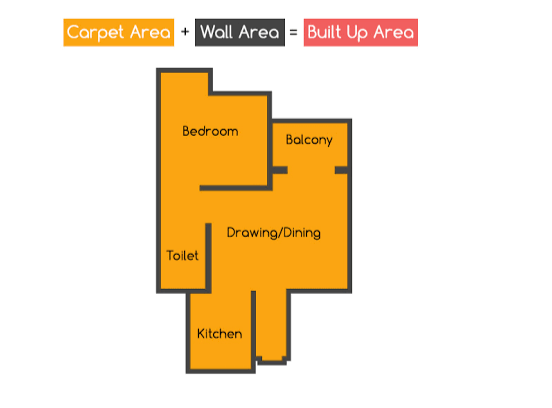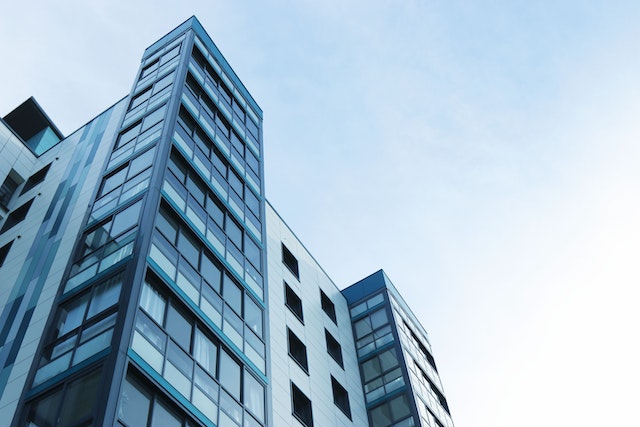A complete guide on carpet area, built-up area, and super built-up area
When you buy a house in Goa or any other part of India, you need to pay by the number of square feet. Sellers usually charge you for the carpet area and the super built-up area at times, as the case might be. Carpet area refers to the area in the flat that you can cover using a carpet. The whole built-up space minus the exterior staircases and walls constitute the carpet area. It comprises the thickness of the inside walls. That is to say, carpet is the area within the house’s exterior walls. If you buy flat in Gurgaon, the carpet area will be seventy percent of the built-up area. Thus, if the built-up area of a house is 1500 sq. ft, the carpet area will be 1050 sq. ft. It is important to know this carpet area as similar terms create a lot of perplexities when you are out to search for a house. This is the actual property layout you will buy and will be at your disposal for your use. The following spaces fall under the carpet area:
- Kitchen
- All rooms
- Stores
- Balconies within the apartment
- Staircase if within the apartment

The built-up area is the carpet area, plus the area covered by walls. The built-up area comprises terraces, balconies, floors, and other removable livable areas such as servant rooms. The built-up area is the total carpet area and the breadth of the outer walls of the apartment. Typically it is 70% to 80 % of the super built-up area. A person gets only 70% of the built-up area to his disposal or for personal use. The inner and outer walls will take up nearly 20% of the built-up area, and 10% gets occupied by balconies. Water pipelines, sewage pipes, utility ducts, interior parts of windows and doors, AC shafts, and ducts are also a component of the built-up region. Mostly built-up area is 70 to 80 % of the super built-up area. Areas covered by built-up areas are:
- Carpet area
- External and internal walls
- Interior parts and utility ducts that comprise sewage and water pipeline, interior parts of windows and doors, AC ducts, and shafts
The built-up area is also referred to as the covered or Plinth area.
Balconies or cantilevers do not count in the built-up area. A beam does not have any assistance from the ground or the lower apartment. Essentially the plinth area or built-up area is below the apartment’s roof.
- Super built-up Area :
Super built-up area is the sum of the built-up area and all the common areas, including the staircase, lobby, corridor, and lifts. In some cases, amenities such as gardens, swimming pool, clubhouse, and sports area are also included in the super built-up area. This area is referred to as a profitable area. Sometimes, builders charge depending on the saleable portions. Still, super built-up areas do not comprise open to sky swimming pools, open sports amenities, compound walls, flower beds, weather sheds, septic or water tanks, open to sky terraces, etc. This area is the real area size as specified by the builder. Thus, if the amenities are more, then higher the super built-up area and certainly more the price. Close to the Super built-up area, a person must know one more term before starting his hunt for a house.
Loading factor:
This is the proportionate share of the common area in an apartment determined by applying a multiplier to the carpet area. You can calculate the value of the loading factor by taking the disparity between the carpet area and the super built-up area. Maximum developers charge the apartment based on the loading factor.
The super built-up area is the built-up area included in the proportionate common region. Proportionate share is the sum of all the common areas classified by the number of apartments. If the common area of ten apartments is 2200 sq.ft., the proportional area for a housing unit would be 220 sq .ft.
One has to be knowledgeable about the terms associated with space and the legalities that come with it. Checking the legalities is of greatest significance, but having information about the space you will own is also essential. This helps in the easy purchase of the asset, without obstacles and with precision. The carpet area is the area that a carpet can cover, excluding the inner walls’ width. Built-up area is the amount of carpet area and the thickness of internal and external walls. Super built-up area is the sum of developed and common areas, including all facilities. Real estate is the most excellent investment source. Anyone without any particular skills can invest in real estate, but only one precaution is requisite. The buyer must know the terms used in this buying process. Know the terms prior to you buying a house in Goa as this is the only investment with nearly no risks of financial loss.
Now, as you have a comprehensible knowledge of carpet area, built-up area, and super built-up area, take care to ask the seller the right questions when you buy house in Goa. Make sure to find out if the area mentioned to you is the carpet area or the super built-up area. If they are charging you for the super built-up area, ask what the loading factor is. Confirm this against the house’s drawings, and take a tape and gauge the inner spaces.



